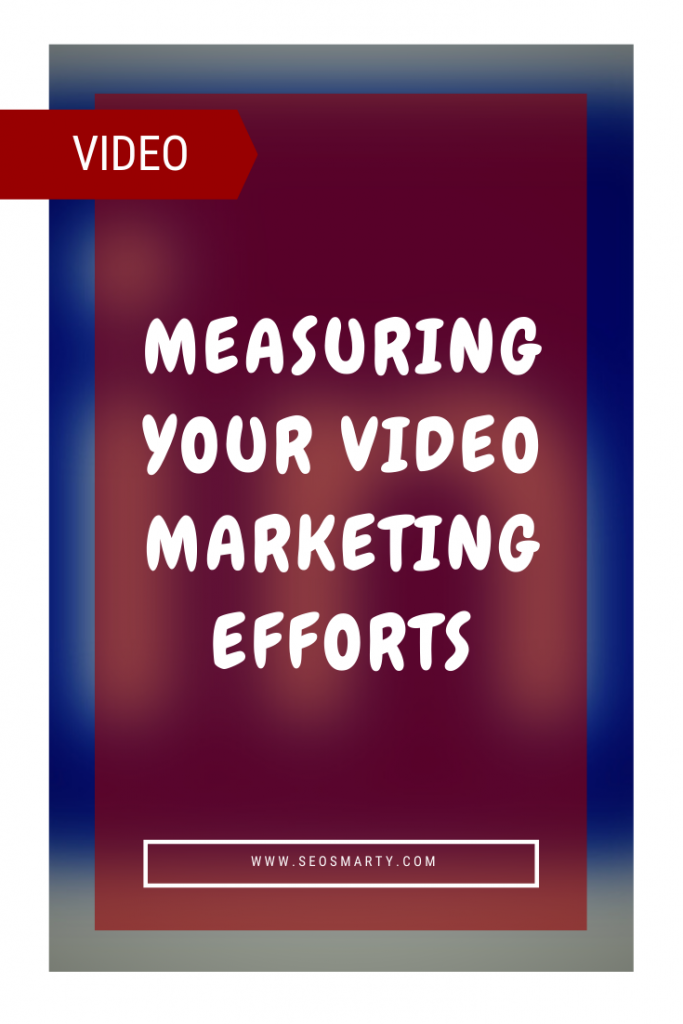
Video marketing is not just a trend, and it doesn’t mean you have to make dance videos on TikTok. But if you’re not already using video in your marketing strategy, you’re falling behind your competition.
If it wasn’t already, LinkedIn has been promoted as the new best friend of businesses looking to add video marketing to their strategy this year. In recent Hubspot research, LinkedIn is expected to take the lead as the most popular channel for B2B video marketers in 2022.[1]
That’s a lot of hype, and video creation can be time-consuming. How can you measure video performance to know if it’s actually stacking up to the pomp and circumstance? Here’s your ultimate guide to measuring your video marketing efforts!
Table of Contents
Video Marketing Metrics To Measure
If you’ve set your goals at the beginning of your marketing campaign, this will guide where you take your measurements and how they stack up to the “before the campaign” numbers. Here are some common campaign goals and what to measure to gauge their success.
Engagement Metrics
Engagement metrics reveal how many people are actively interacting with your content. This is proof of two things. One, your content is successful, and two, you’re reaching the right target audience.
Video View or Play Rates
Video watch-through rates reveal how many viewers complete a video, from start to finish. Abandon rates, also known as “drop-off,” will tell how many viewers leave before finishing your video.
How long your video is will influence these rates. Vidyard, an online video creation software, reports that 68% of viewers will watch a video through to the end only if it’s shorter than one minute. But only 25% of viewers will finish a video if it’s up to twenty minutes in duration.[2]
Play rates show that many people watched the video more than once of pressed “play” rather than being fed an auto-play video.
Comments
Keep an eye on who is leaving comments. Are they your target audience? If so, an increase in comments could prove you’re on the right track with your content.
Comments are generally more valuable than likes and reactions as they indicate the viewer took the time and added effectiveness to engage in a more intentional way.
Reactions and Likes
Likes and reactions can be exciting but are considered vanity metrics, especially for video marketing. They don’t indicate accurate targeting or true engagement. It could merely show that your video had a good thumbnail graphic.
Calculate Engagement
Each of these metrics is calculated with the same formula: Divide the views/likes/comments by the total impressions.
For an accurate engagement rate, divide the number of comments by the number of total views.
How To Access Engagement Data
Here’s how you find this data on Instagram:

YouTube offers these clear instructions for Apple devices:

TikTok shares this helpful guide to accessing your engagement metrics:

Conversion Metrics
Conversions tell the story of how compelled your viewers are to turn into action-takers after watching your videos. Is the content right, and does the call to action work?
Click-Through Rates (CTR)
Clicking goes beyond passive consumption. It’s proof that, at the very least, they’re interested enough to respond to your call to action.
Lead Generation
This takes place after someone clicks. Did they give up their email or register for your webinar?
Calculate Conversion Metrics
Platforms like Google AdSense and YouTube calculate the conversion rate by dividing the number of clicks (CTR) by overall impressions. A more precise calculation would divide by the view counts.
For leads, calculate the number of leads collected by how many clicks were received for a targeted rate.
Sales Metrics
Your marketing is to push and promote your products. It all comes down to the dollar! How many sales can you trace back to your video marketing? Here’s how to tell if it’s working.
For a highly targeted rate, calculate the number of sales divided by the number of clicks (CTR). You can expand this calculation for a broader perspective by dividing the number of sales by video views.
With these metrics in hand, and assuming the rate stays the same, you should be able to determine how many clicks you need to reach your sales goals. This is another ingredient in the recipe for how many videos you need to produce in order to reach those goals.
Brand Awareness Metrics
Brand awareness and earned media are more comprehensive metrics to measure. They paint a picture of your online presence and reputation.
View Count or Unique Viewers
Not to be confused with play rate, a high view count may prove that your content and messaging are attractive to a broad audience.
Views are counted in a few different ways, depending on your platform of choice. YouTube videos and ads must be viewed for more than thirty seconds to count in the “viewed” column. For Meta’s Facebook, three seconds is all that’s required.
Reach and Impressions
While they are different from one another, reach, and impressions are raw data metrics that tell how many eyeballs fell on your content.
Reach shows the number of unique viewers that were served your video. Impressions increase if the same viewer watches your video again, whereas reach will not, making it the more valuable metric.
Shares
A viewer may watch and enjoy your video, but content that truly resonates is infinitely shareable. They further your brand and industry credibility. By sharing, users show that they’re happy to align themselves with your mission and message.
All of your engagement and conversion metrics tell a greater story of your online success. There is a silver lining in metrics that don’t necessarily line up with your campaign goals. A low lead count but an increased engagement rate still has value, and your videos will serve your brand in other ways.
The ROI Calculator
Now the critical question. How do you really know it was worth it? Follow the money! And the formula is simple.
You divide the number of sales in dollars by the expense of creating the video, including any ad spend. If the video was more expensive to make than what you made from it, or if you had to buy equipment for your first run of video content, you may not come out on top in the early campaigns.
Calculating a precise ROI would take all of the metrics into consideration, from views, comments, clicks, leads, and conversions.
How many views led to clicks? How many clicks lead to leads? How many leads led to sales? How much money did you make? This should give each lead an estimated value in dollars, which trickles down into clicks.
Now that you know how much you spent on your video marketing and how much money you gained from your campaign, you can calculate a comprehensive ROI.
Long-Term Value
For the most accurate results, your video must be online for a long period of time, at least several weeks. This will allow you to calculate performance over time and gather enough data to project future performance.
Having relevant content at the ready also enhances brand credibility and gives new prospects more information about your products, services, and processes.
Tips To Increase Video Marketing Metrics
Here’s a look at what to do when your metrics don’t measure up!
How To Increase Engagement and Awareness
If you’re getting low view rates, this may be an indication that your content isn’t a good match for your target audience or it’s not engaging enough to captivate their attention. Choose three to five content buckets that suit your brand and test them against one another.
Whichever video performs better, make others on similar topics or in the same style. Test again. Review primary messaging, audience targeting, and keyword usage to continue optimizing for engagement metrics. Keep developing your messaging until your engagement rates spike or remain at a good, steady level.
Try a variety of content types, don’t get stuck in talking head videos simply because they’re easy to make. Venture into deeper levels of creativity and hop on trends. Entertain as well as sell and educate.
Here are a few other ways to adjust your video content for engagement:
- Upload videos on multiple platforms, test against one another
- Include keywords in video titles and descriptions
- Create eye-catching thumbnails and cover photos
- Write an enticing hook
- Conduct hashtag research and use it strategically
- Upload content when each platform is the most active
- Incentivize your team to share company content
- Recycle older content that is relevant again and reshare
How To Boost Conversions:
Conversion testing is a never ending cycle of “create, test, enhance, and repeat.” The better handle you have on who your target audience is and what will compel them to take action, the more successful your campaign will be.
- Text messaging and video intent
- Calls to action should be clear and give only one direction
- Test what happens after they click
- Create video content that matches all stages of the customer journey
- Optimize landing pages with more video and keywords
Track Everything. Measure Success.
A spreadsheet is all that’s required to track the necessary data, as most platforms will provide easy-to-read metrics. They say you can’t rush art. Give your video marketing time to gather enough data for measuring success.
Sources:
[1]https://blog.hubspot.com/marketing/b2b-marketing
[2]https://awesome.vidyard.com/rs/273-EQL-130/images/2019-Video-in-business-benchmark-report_WEB.pdf
Torrey Tayenaka
Latest posts by Torrey Tayenaka (see all)
- Ultimate Guide To Measuring Your Video Marketing Efforts - Aug 27, 2022
